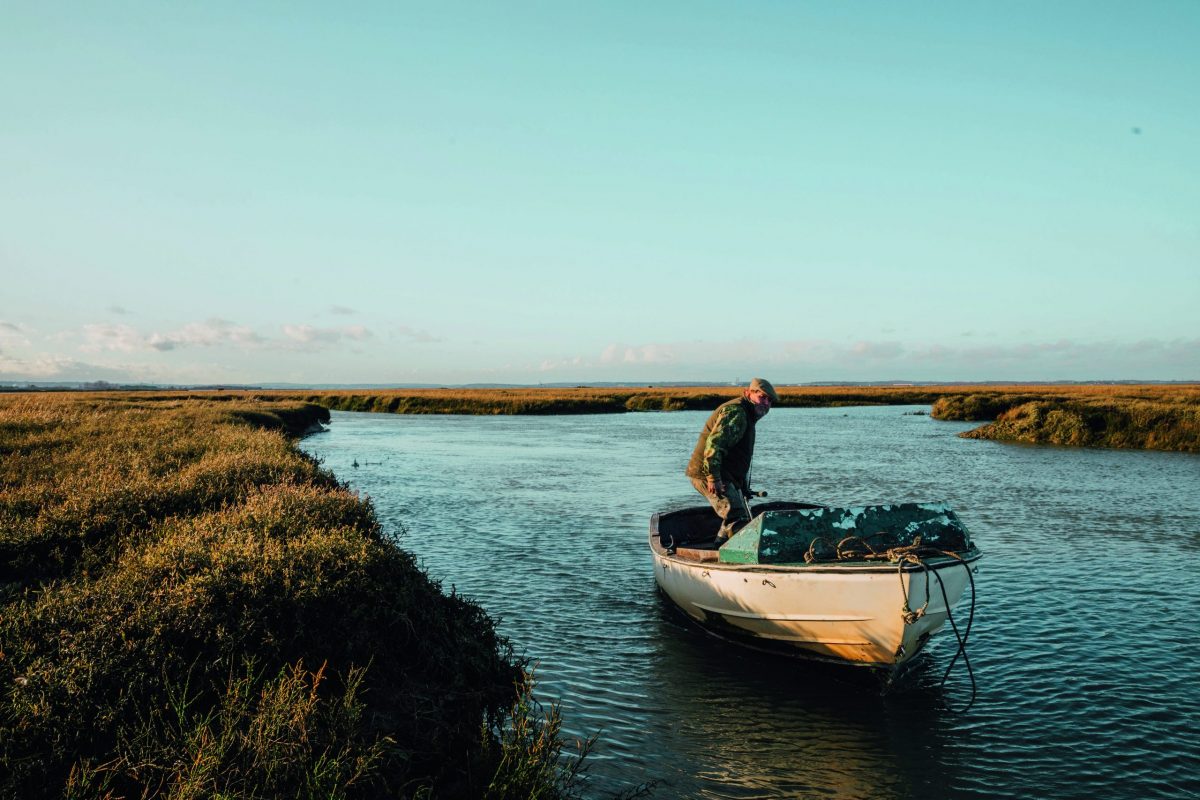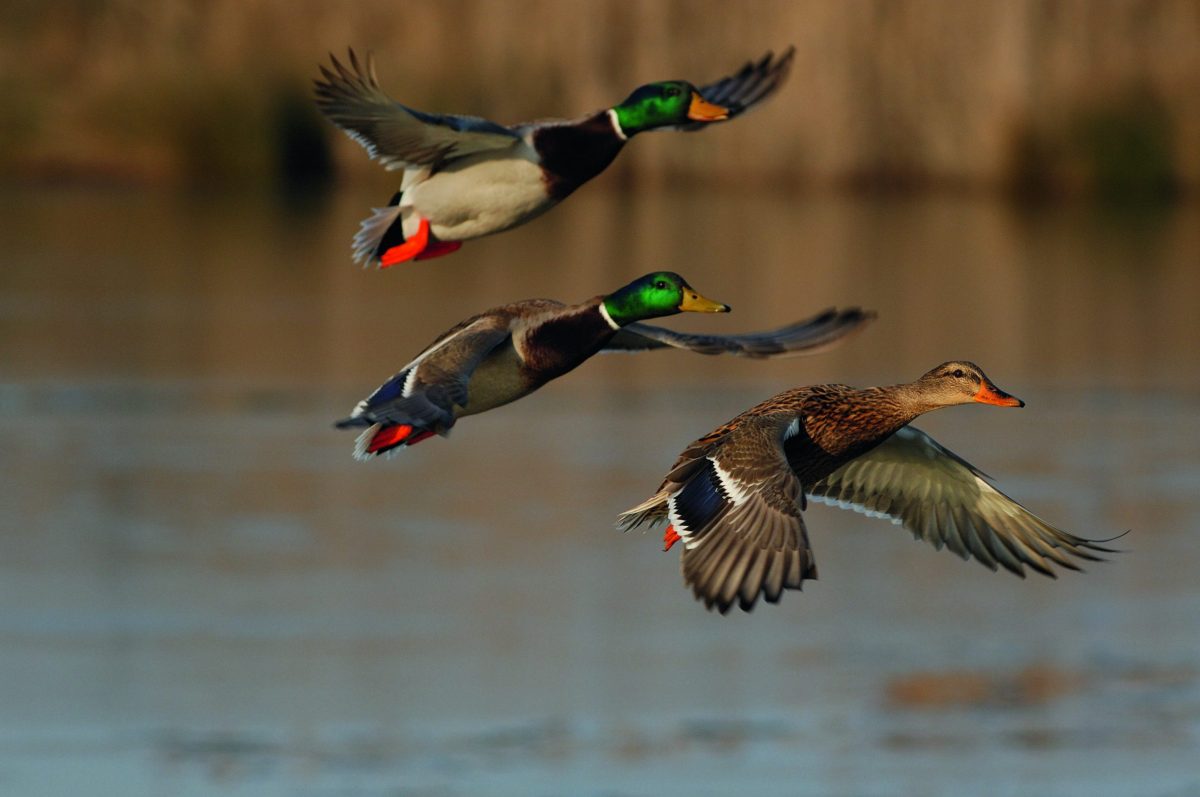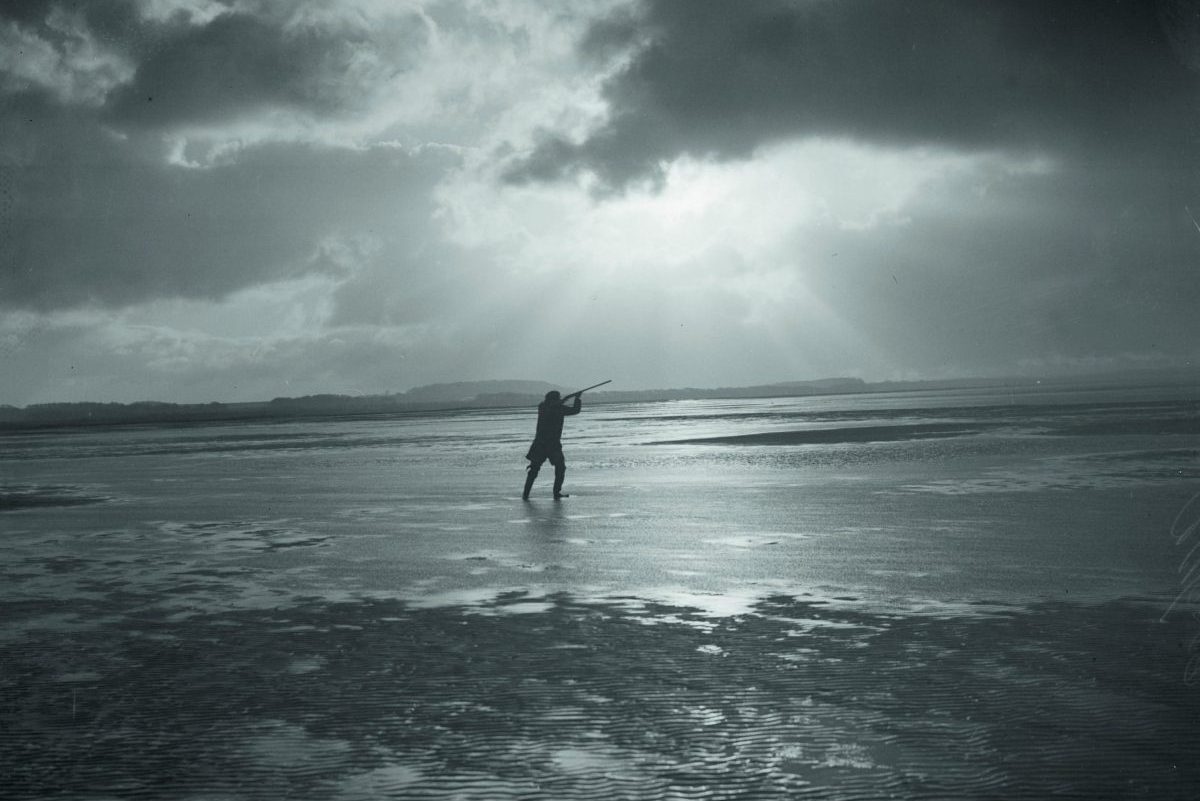Duck flighting using hides on managed land
The duck come in thick and fast and everyone from this friendly club is in the shooting — albeit from a potato box hide
When duck approach Little Oakley and District Wildfowlers Association’s (LODWA) 50 acres of meadowland and lagoons, they come from all directions. It’s late October and as daylight slips away, I can hear wigeon calling overhead; a wedge of mallard is silhouetted against the glow of Harwich Harbour to my front, looking likely to pitch into the shallow waters; and somewhere to my right a single teal has landed unseen and is piping a thin whistle. Canadas are calling from the open water in the east, and behind me I can hear more teal inbound.
Sitting alone in a potato box wouldn’t be most people’s preferred location on a Saturday evening. I associate them with a faint odour of rotted spuds. But for the 100 members of LODWA, it’s a privilege that is much sought after. As birds pour in at evening flight, it’s not hard to see why.
While the thoughts of residents in the nearby town of Dovercourt turn to Halloween, a handful of fortunate club members meet in a remote car park on the sprawling floodplains of Arthur Ransome’s Secret Water. My name had been drawn in the September meeting and I am one of the lucky few with space in a box.

Avocets are now thriving in the area thanks to the efforts of the wildfowling club
The evening is mild and the conversation is optimistic and good-natured. An influx of teal on easterly winds is reported, and from the wetland area — a distance of some 500m — the sound can be heard of brent geese feeding contentedly. A mallard calls raucously from the borrow-dyke.
Tonight, I am alongside four stalwarts of the club, Pete Bridges, Paul Ellis and Tony and Tom Novorol. The senior member is Pete with Polly his black lab. His father came from Suffolk to Essex during the Great Depression. “I spent most of my time on these marshes as a boy,” he remembers, leaning on the gate and gesturing expansively at the sky and the liminal saltings.
Pete saw the founding of the club in 1952 and the exceptional winter of 1959, a benchmark for teal numbers. “We had thousands. Every year since has been measured against that season.” He remembers teaching his son Gavin on these marshes. And in turn, Gavin has taught his three sons to become keen young countrymen.

Simon Garnham’s labrador Scout picks up a duck from the shallows
The youngest of our group this evening is Tom, who has been drawn alongside his uncle Tony. LODWA is very much a family club and the Novorols are at the heart of it. Tony, known as Baggy, is the club’s conservation officer. We discuss the remarkable summer for breeding avocets. “We dug our first lagoon in 2009,” Baggy remembers, “and in 2010 we had a single bird fledge successfully. This summer? More than 60 avocet chicks. The avocets are the most fantastic parents. They’re so brave and determined. When the marsh harrier comes, it doesn’t dare take them on any more. They form a flock like starlings and don’t stop mobbing it until they’ve seen it off.”
Baggy and nephew Tom take a proprietorial pride in this place. The club — always pioneering — had already purchased the salt marshes when 40 adjacent acres of farmland and 10 acres of borrow-dyke and sea wall came available in 2006. The first lagoon was dug in 2009 measuring 35m by 200m with two islands for nesting waders. About 700m of hedgerow and a half-acre of native trees were planted before a second lagoon area was dug.
The grass is carefully managed for lapwings, skylarks, corn buntings, warblers, redshanks and duck, all of which breed here alongside black-headed gulls and the avocets. In winter the club uses the lagoons to train a healthy youth section. They’re an ideal venue for quarry identification and judging ranges. Older members can keep their eye in without risking life and limb on tidal waters.

Isla is full of enthusiasm as she bounds into the lagoon to retrieve an early duck dropped by Tom
Creeping into position
Paul Ellis, the shoot captain, allows us to draw for our potato-box hides. Nearest to the sea wall tends to be best, but there are no bad spots; I am somewhere in the middle. A piece of Celotex helps insulate the dampness from the makeshift bench. My labrador Scout fidgets as we all make our last preparations before evening flight. The brent geese we put off as we crept into our positions return, and a single mallard circles out of range.
Tonight the birds begin to come in broad daylight and almost as soon as we’ve arrived. Paul drops one from a high bunch of four and Baggy christens his new Yildiz 3 ½in-chambered Wildfowler with a second from the same pack.
As a young fowler in the early ’90s, Baggy and his brother Julian took me through the club’s Young Fowlers course, showing me safe routes across the marsh and good spots to intercept teal. I was fortunate also to be taken punting and on exhilarating cold-weather flights when the saltings were frozen and ice flowed in the channel. Recently Baggy introduced me to a superb spot in Norfolk where pinkfeet blacken the skies.

Simon swings through a group of mallard and brings a drake down as the birds begin to descend
Tonight it’s the next generation teaching us how to shoot. The mallard are beginning to approach with less caution and Tom takes a right-and-left which Uncle Tony’s labrador Isla retrieves from the shallows. Birds are incoming with urgency and I’m also in the shooting with a pack dropping, paddles down, presenting what seems to be an easy chance. Somehow I fluff the first shot but connect with the second as a drake accelerates overhead and cartwheels into the grass behind.
The Canadas are on the move and a skein signals its collective intention from way out over the harbour. We all sink lower into our potato-box hides, hushing restless hounds and trying to steady racing hearts. Closer it comes and still closer, unswerving in its intentions. Paul has worked hard to generate opportunities like this with barley scattered in the shallows and low-cut grass on the banks, just right for a hungry honker. But who will have the chance?
The Novorols are in the shooting again. The geese flare in a flurry of panicked calling as Baggy swings through the pack. One is falling in a mess of wings and lifeless body. The others break and Tom is able to bring down a second with two shots. Dogs are sent for retrieves and the bag increases.

This summer the lagoon — dug 13 years ago — was home to more than 60 avocet chicks
In Felixstowe and nearer in Dovercourt, lights are beginning to show as the darkness slips in swiftly. Now the most important sense becomes hearing. The faintest of whistles indicates the teal which has dropped in, unaddressed. The unmistakable phweeoh of wigeon overhead gets thumbs feeling for safety catches and faces upturned.
Two flashes nearest to the sea wall at what I later discover is a shoveler send the teal springing for safety, and I am able to pick out the dark shape. I squeeze the trigger at the moment when stock and cheek and shoulder all coincide and it tumbles back into the water. Growling at Scout to stay put, I strain my eyes and ears to see what, if anything, is circling around but, although there is the faintest sound of pinions, they are lost against the blackening sky. Another shot rings out, then silence.
Paul blows his whistle while there are still birds on the move, and Scout is momentarily distracted from her hunt for a mallard in the reeds as teal land almost on top of her. White light is kept to a minimum and the dogs, of which mine is clearly the most unruly, sweep the area without fuss. All the birds are accounted for and we meet back in the car park to compare notes.
Not everyone approves of duck flighting. It’s not ‘proper’ fowling. But in their wetland area, which club members have spent 15 years creating, LODWA has an exceptional place for conservation, a wonderful training ground for younger members and a place that is a privilege to shoot. Even from a potato box.








